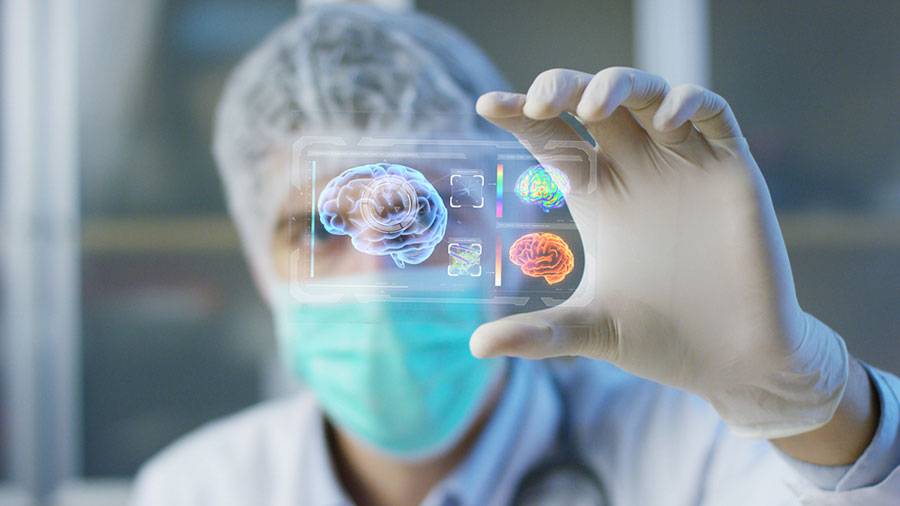
Brain and Neurosurgery

Brain and Neurosurgery
Brain and Neurosurgery Neurosurgery is concerned with diagnosing and treating patients with problems and diseases in the parts of the central nervous system (the brain and spinal cord) or in the peripheral nerves scattered throughout the body. Modern methods of treatment for brain and nerve problems include the following: Radiosurgery using Gamma Knife technology*
services of
Brain and Neurosurgery
Radiosurgery using Gamma Knife without surgery
Stereotactic radiosurgery is a form of non-surgical radiation therapy that can be applied to get rid of functional abnormalities or small tumors in the brain. During a high-dose radiation session, which is less numerous compared to conventional radiation therapy, healthy tissue can be maintained by accurately sending the rays to the target.
Stereotactic radiosurgery is used on a daily basis and patients do not usually need to lie down. You should consult your doctor about whether the patient needs a companion during the return to the treatment center, and what are the prohibitions and permissibles for food and drink. You should inform your doctor about pregnancies, lactations, or treatments for other conditions, such as insulin for diabetics.
Herniated disc surgery
Herniated disc is the lower part of the spine where it puts pressure on the spinal nerves flowing from the lateral canal of the bone, leading to the appearance of many symptoms that include numbness and weakness of the foot, loss of the ability to walk normally and feeling sharp and sudden pain, such as an electric shock, which we call sciatica in addition to the loss of the ability to control urine.
Spinal stabilization (fusion of the vertebrae)
Spine fusion is a surgical procedure used to correct small bone problems in the spine (vertebrae), as it is basically a "welding" operation. The basic idea is to merge two or more vertebrae so that they heal into one solid bone, thereby eliminating painful movement and restoring stability in the spine.
Spine surgery is usually recommended only when your doctor can identify the source of the pain. To do this, your doctor may use imaging tests such as X-rays, CT scans, and magnetic resonance imaging. Combining the vertebrae may help relieve symptoms of many back problems, including:
Degenerative disc disease.
Spondylolisthesis.
Spinal stenosis.
Scoliosis.
Break in the vertebrae.
Infection.
Herniated disc
Tumor
Merging the vertebrae eliminates movement between the vertebrae and prevents the stretching of the nerves, ligaments and muscles surrounding them. This option is appropriate when movement is the source of pain, such as movement in a part of the spine that is related to arthritis or unstable due to injury, illness or the normal aging process. The theory here holds that if the painful vertebrae do not move, they should not cause pain.
Spinal stenosis treatment
When the bone of the spine deteriorates, the body responds by accumulating calcium, which causes the bones to swell and increase the thickness of the tendons to absorb this added weight. In some cases, this excess bone and tendon can lead to stenosis (narrowing) of the spinal canal, which includes a number of nerves. These nerves can then become compressed.
Usually the nerves that branch out of the spinal canal compress first; If the condition worsens further, a narrowing of the spinal cord will occur.
